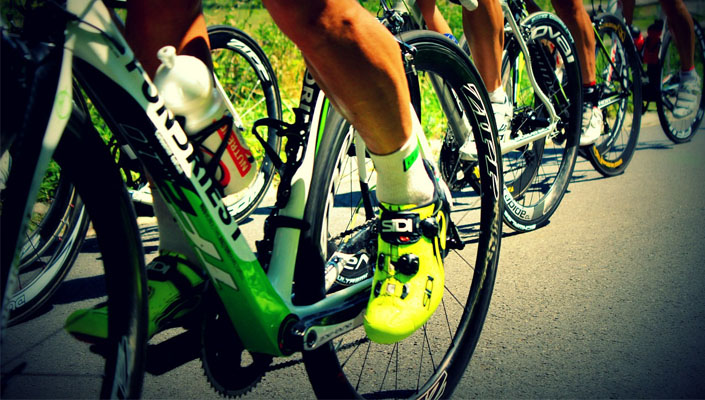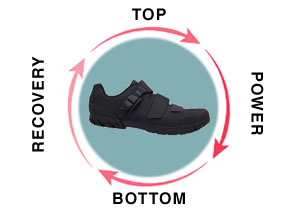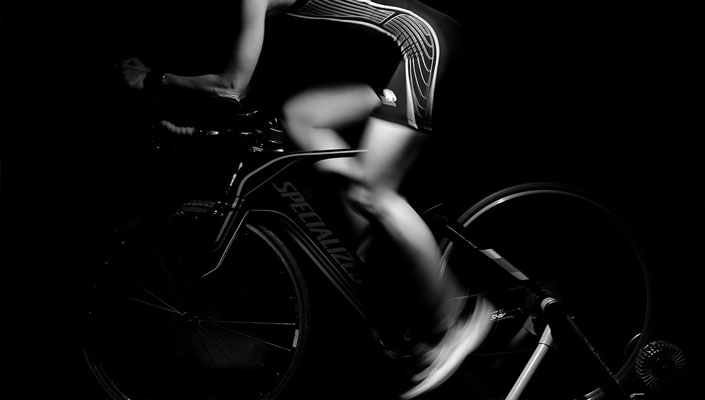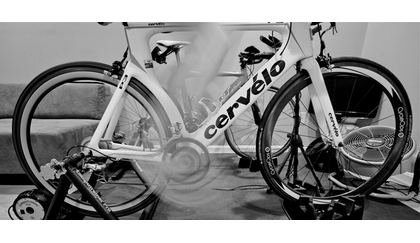
When you see a pro rider on his or her bike, have you ever stopped to think about what it is that makes them look so good? Sure, they're tanned and lean, which always helps, but another thing they all have in common is perfect and efficient pedaling technique. Pedaling seems pretty simple, but when you break it down into its component phases it becomes evident that a good pedal stroke can save you energy and a poor one can waste power and effort.
Today we look at some ways to improve the efficiency of your pedal movement. These drills can be done as part of your regular ride, so they won't require any extra training time, but if you can use them consistently you'll notice a dramatic and welcome smoothing out of your pedal stroke. Think about this: if you go for a 1-hour ride at an average cadence of 100RPM, that's 6000 pedal strokes. If you can manage to save even the tiniest amount of energy per pedal stroke, and you multiply that by 6000, you've made quite a significant gain!
Pedaling: The Good And The Bad

Riders who pedal efficiently are especially good at the top, bottom, and recovery side of the pedal stroke. At the top they are able to transition efficiently from pedaling up and back to pedaling forward and down. At the bottom of the stroke they do just the opposite without wasting energy. Riders who are not very good at pedaling make these transitions too late. This wastes a tiny amount of energy in every stroke.
Those riders with a more efficient pedal stroke slightly unweight the pedal on the recovery side, or backside, of the stroke. Inefficient riders let the foot and leg on the recovery side rest like a dead weight on the pedal causing the other leg, the one driving the pedal down, to work harder to lift the dead weight of the recovery leg. Again, this wastes a lot of energy.
Spin Drill
During a ride, shift to a low (easy) gear and gradually increase your cadence higher and higher until it is so fast that you begin to bounce on the saddle. Then, return to a normal cadence. It should take 30 seconds or so for each "spin-up." The bouncing is because you have reached and gone slightly beyond your optimal high cadence, and because your foot is still pushing down at the bottom, six-o'clock position, of the stroke - since the crank arm can't get any longer, as you push down your butt comes off of the saddle. This drill will help you raise your highest optimal cadence by learning to transition smoothly at the bottom of the stroke.

Single-Leg Drill
Just as the spinning drill works on the bottom, or 6-o'clock position, of your pedal stroke, this drill smoothes out the top (or 12-o'clock position). It's done on an indoor trainer or spin bike, so you can use it as a warm-up or cool down during a Spin class or wind trainer workout. Unclip one foot and rest it on a chair next to the bike so you are left to pedal with only one leg. With the bike in a low (easy) gear turn the crank at a comfortable cadence.
The first thing you'll notice is that getting through the top of the stroke, the 12-o'clock position, is difficult. Focus on smoothing this top transition. At first you may only last a few seconds before the hip flexors fatigue, but after some practice you'll notice rapid improvement.
Focus On Your Feet
You need to use your imagination a bit for these drills, but they really do help in perfecting your pedaling technique. Firstly, visualize pushing your foot forward, trying to touch your toes to the front end of your shoe every time your foot approaches the top of the pedal stroke. Of course, you won't be able to do this, but the attempt will cause you to transition more smoothly through the 12-o'clock position. Pedal in an easy gear going slowly as you learn how to make this movement, and as you get better at it you'll be able to turn the pedals faster.
Once you have mastered this, try pedaling by keeping the top of your foot in constant and firm contact with the inside top portion of your shoe. Try not to push down on the pedal at all. The actual pedaling is done just with the upstroke. Don't apply excessive upward force, and try to make the pedaling movement gentle and smooth.
Practice these simple drills for a little while and then start to incorporate them into your everyday riding. Without putting in much extra effort, you'll start to notice some improvement and you'll be well on your way to a smooth, powerful, professional pedal stroke.

RELATED ARTICLE:
Cadence 101: Nail your ideal pedaling speed
You may feel envious of the professional cyclists dancing up the hills, or even your Sunday ride whippets spinning the pedals like they don't have a chain. Sometimes they may seem light-years ahead in ability, but that's just because you don't know their secrets... READ MORE


